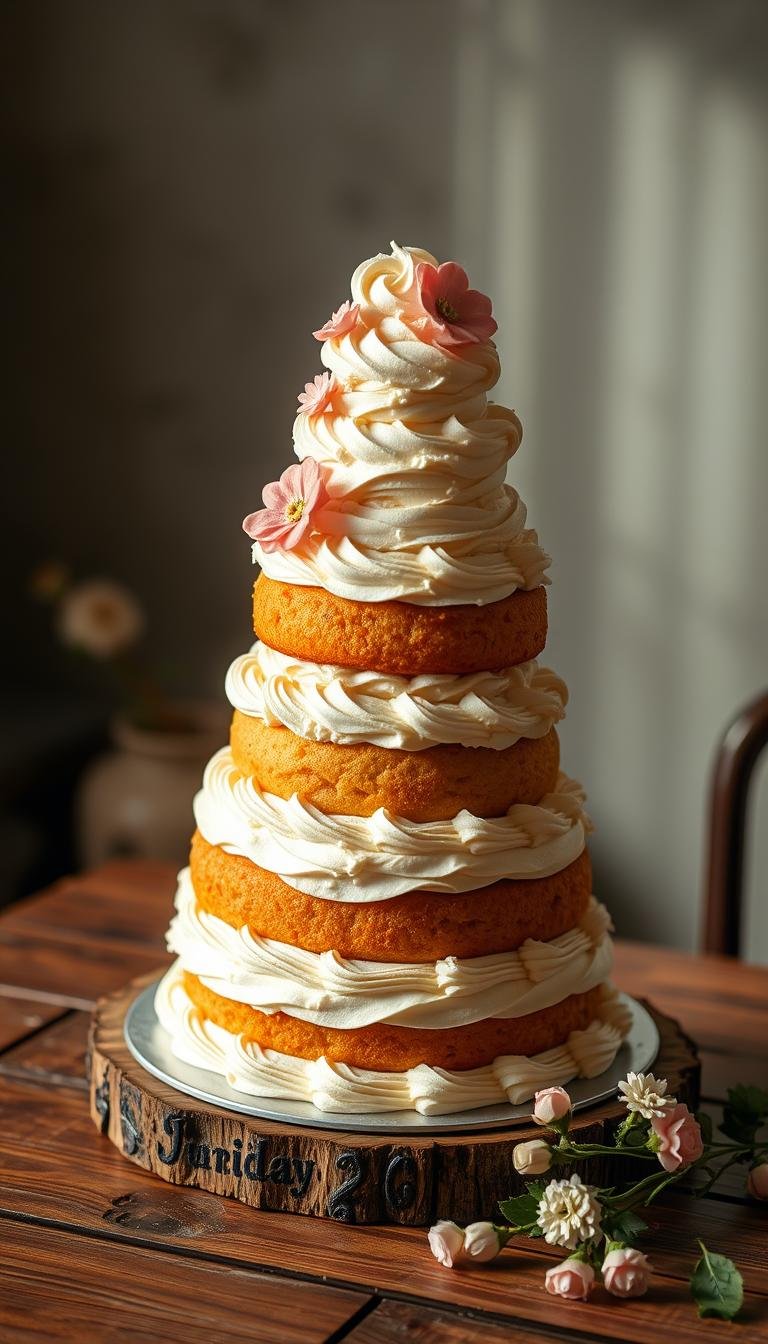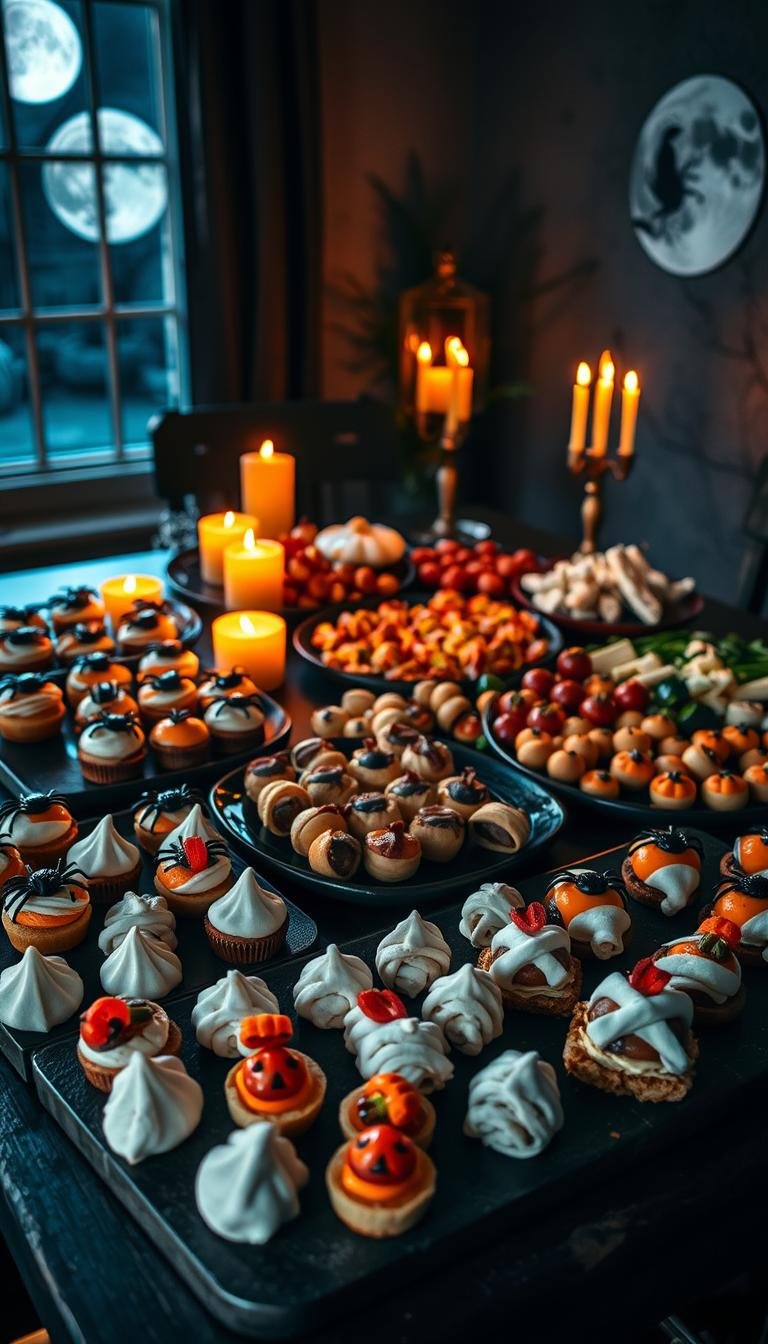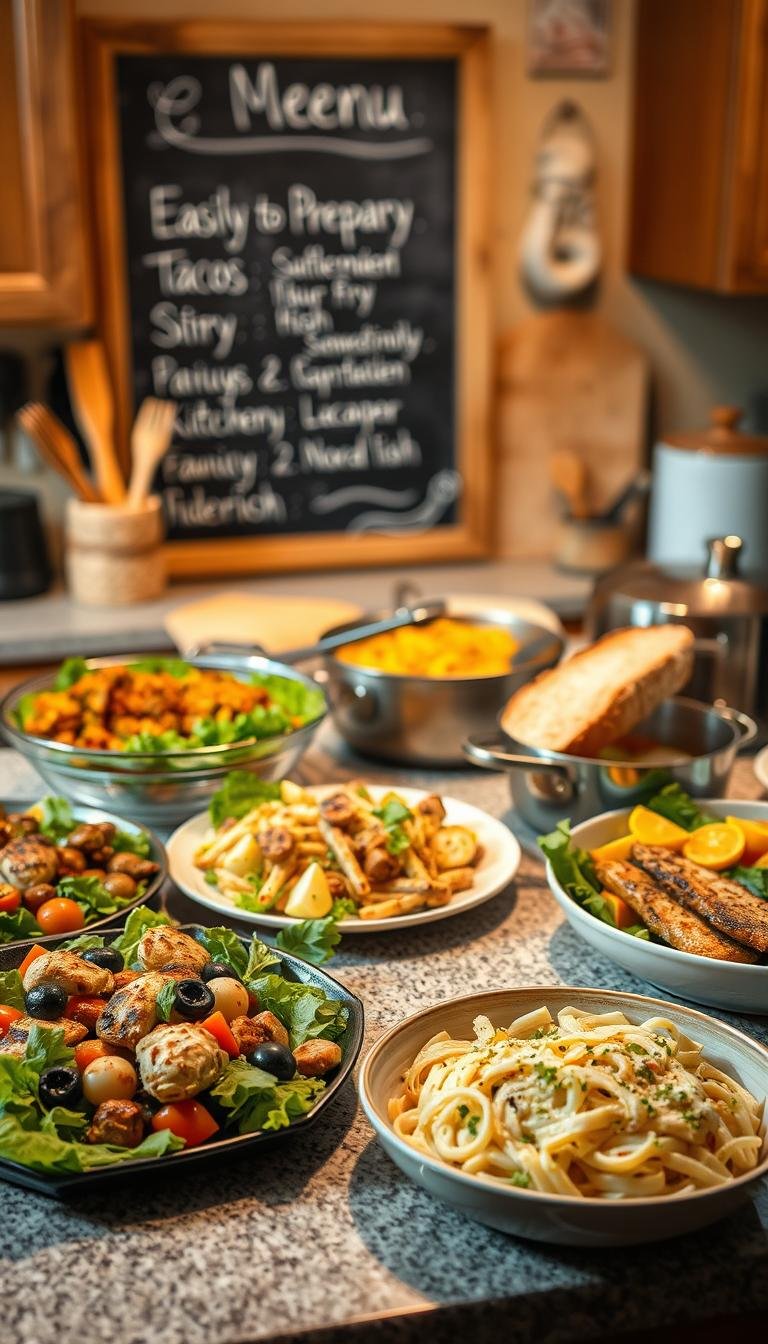Simple First Birthday Cake Recipes for a Joyful Celebration
Surprising fact: fruit- and vegetable-forward smash cakes often bake denser and moister than egg-based desserts, making them a gentle, photo-ready option for little ones.
These simple recipes lean on applesauce, bananas, squash, and berries for natural sweetness and structure. They won’t rise like a classic sponge, but that gives a tender texture that suits a small guest of honor.
Expect short bake times and easy swaps: oat or gluten-free flours, coconut or Greek yogurt frostings, and natural colorings from beet or blueberry juice.
Why this matters: low added sugar keeps the moment safe and fun, while modest layers and smart oven times help you plan a stress-free build and a memorable smash.
Key Takeaways
- Fruit- and veggie-based smash cake batters are moist and dense—perfect for a baby-friendly treat.
- Four approachable recipes focus on apple-beet, blackberry-parsnip, citrusy squash, and a berry 6-inch option.
- Limit added sugar; use ripe fruit and applesauce to sweeten naturally.
- Choose frostings like chilled coconut cream or Greek yogurt and color them with natural juices.
- Follow specific pan sizes and oven times for reliable layers and easy assembly.
What Makes a Great First Birthday Cake for Baby
Choose texture and gentle sweetness over flashy extras. Denser batters made with fruit or vegetables give a soft, moist crumb that suits a baby’s developing palate. These batters keep sugar low and rely on applesauce, mashed banana, or pureed squash for natural sweetness.
Allergen awareness matters. Many simple recipes include wheat, coconut, eggs, or dairy. Only add those ingredients if the child has tried them before without issues. Greek or coconut yogurt makes a protein-rich, lower-sugar cream topper adults can lightly sweeten.
Keep decorations soft and safe. Avoid hard fondant, candy melts, or small decorations that pose choking risks. A single small layer or three stacked 4-inch layers works well and cuts down on waste.
- Prioritize fruit for sweetness and color.
- Balance wet and dry ingredients for a moist, stable bake.
- Allow full cooling time before trimming and stacking for a clean finish.
| Ingredient | Benefit | Common Allergen? | Best Use |
|---|---|---|---|
| Applesauce | Natural sweetener, adds moisture | No | Replace some sugar and oil |
| Mashed banana | Soft crumb, mild flavor | No | Use in small-layer recipes |
| Greek/Coconut yogurt | Protein-rich frosting, less sugar | Coconut = possible allergen | Chill before spreading |
| All-purpose flour | Structure and reliable rise | Wheat | Use or swap for oat/gluten-free |
Key Ingredients, Pans, and Tools for Success
Careful selections of flour, fruit, and pans set you up for consistent, tender layers. Choose oat flour when you want a soft, wholesome crumb; it benefits from a 5–10 minute rest so the batter hydrates evenly. All-purpose flour adds structure for taller layers, while blends like Cup4Cup work if you need gluten-free swaps.
Build sweetness from fruit — overripe bananas, unsweetened applesauce, or fresh berries give flavor and moisture with low added sugar. Crush freeze-dried strawberries into the batter for concentrated color and taste.
Prep dry ingredients in a bowl and whisk in baking powder and a pinch of baking soda if the recipe calls for it. Add warm spices like cinnamon and a splash of vanilla extract for aroma without extra sugar.
“Line three 4-inch or 6-inch pans with parchment rounds for clean release and even layers.”
Set up three sturdy cake pans, parchment paper rounds, a mixing bowl, offset spatula, and an acetate sheet or metal ring for smoothing. Measure by the cup or weigh fruit solids for consistent batter across layers. Keep butter or coconut oil at the state the recipe specifies to ensure a smooth batter and uniform crumb.
- Flour choice: oat flour for tenderness; all-purpose for strength.
- Leavening: baking powder (+ baking soda in acid recipes).
- Tools: bowl, parchment, cake pans, spatula, metal ring.
First birthday cake: simple, baby-friendly recipes you’ll love
Small pans and puree-forward batters produce moist, gently sweet layers that are easy to make and safe for little hands.

Apple Beet Smash Cake with natural red color
Highlights: raw beet keeps a bright hue. Use applesauce and mashed banana to sweeten. Bake at oven 350°F about 30 minutes until a toothpick comes clean.
Blackberry Parsnip Smash Cake with berry pops
Shredded parsnip gives carrot-cake-like texture. Quartered berries add pockets of fruit; puree them for uniform color. Optional coconut yogurt topping keeps sugar low.
Citrusy Squash Smash Cake with cardamom
Squash puree, orange zest, and cardamom make a cozy profile. Use coconut oil and minimal coconut sugar if desired. Line cake pans with parchment and distribute batter evenly.
Berry low-to-no-sugar 6-inch layered cake
This 6-inch recipe uses bananas, applesauce, and crushed freeze-dried strawberries. It calls for 2 eggs and bakes 18–22 minutes at oven 350°F. Cool fully before assembly.
“Line pans with parchment rounds and trim domes for stable stacking.”
| Recipe | Bake Time | Yield | Storage |
|---|---|---|---|
| Apple Beet | ~30 minutes | Three 4-inch layers | Room 3 days / Fridge 1 week / Freeze 2 months |
| Blackberry Parsnip | ~30 minutes | Three 4-inch layers | Room 3 days / Fridge 1 week / Freeze 2 months |
| Citrusy Squash | ~30 minutes | Three 4-inch layers | Room 3 days / Fridge 1 week / Freeze 2 months |
| Berry 6-inch | 18–22 minutes | Two or three 6-inch layers | Room 3 days / Fridge 1 week / Freeze 2 months |
Dairy-Free Coconut Frosting and Whipped or Yogurt Frosting Options
A silky, dairy-free topping or a chilled yogurt spread keeps texture gentle and flavors bright.

Silky Smooth Coconut Frosting sweetened with orange juice
Method: chill canned coconut cream 24 hours, scoop the solid part into a cold bowl, and whip with 2 tbsp fresh orange juice until fluffy.
Brands that hold well: CoCo Goods, Let’s Do Organic, and Thai Kitchen. Tint gently with beet or blueberry juice to avoid thinning, and chill the bowl if it loosens.
Whipped cream frosting: low-sugar and decorating flexibility
Whip chilled heavy cream for a light, low-sugar finish. Many adults add a touch of sugar, but it can remain unsweetened for a baby-friendly smash cake.
“Keep tools cold to improve structure and reduce weeping during assembly.”
Greek or coconut yogurt frosting for a protein-rich topper
Stir Greek or coconut yogurt with a bit of vanilla and unsweetened applesauce for a tangy, stable spread. Refrigerate briefly before frosting.
- Aim for a light crumb coat, chill, then smooth the final layer.
- For ombré, tint small cups of frosting and blend bands on the sides.
- Keep decorations soft and thin to stay baby-safe.
From Batter to Cake Layers: Step-by-Step Baking and Assembly
A calm mise en place—measured ingredients, lined pans, and a preheated oven—sets you up for reliable layers.
Prep: Preheat to oven 350°F for fruit-and-veg recipes (or 325°F for oat flour batters). Grease the cake pans, press parchment paper rounds into the bottoms, and place pans on a sheet tray for even heat and easy handling.
Mixing and Baking
Whisk dry ingredients in a bowl and combine wet elements separately. Fold the batter gently until no dry streaks remain so the texture stays tender.
Divide evenly among pans. Bake the 6-inch recipe about 18–22 minutes; 4-inch fruit-veg layers take ~30 minutes. Check doneness in the center and remove when a toothpick comes clean.
Cooling, Trimming, and Assembly
Let layers rest in pans 10–15 minutes, then turn onto a rack to cool completely. Chilling the layers firms delicate batter for trimming and stacking.
Level domed tops with a serrated knife to create an even cake layer stack. Apply a thin crumb coat to seal crumbs, chill briefly, then add the final frosting pass.
Use an acetate strip or cake ring to smooth tops and sides. If using oat flour, rest mixed batter 5–10 minutes before baking to improve structure. Measure timing in minutes to give each step room to set for stable, neat layers.
Decorating, Serving, and Storage Tips for Smash Cakes
Plan short cooling and chilling steps so the display stays neat until it’s time to smash. Let layers cool completely, then chill briefly before decorating. This reduces sliding and gives frosting a firmer surface to work on.
Natural color and gentle frosting tips: Tint small bowls of frosting with tiny drops of beet juice for pink, blueberry or blackberry for purple, or carrot for soft orange. Add color slowly to avoid thinning whipped frostings and to protect the air in whipped cream.
Make-ahead, freezing, and keeping freshness
Bake cake layers 1–2 days ahead and wrap them tightly. Unfrosted 4-inch or 6-inch layers can freeze up to one month; fruit-veg cakes store up to 3 days at room temp, one week refrigerated, and about 2 months frozen when well-wrapped.
- Let frozen layers thaw overnight in the fridge before assembly.
- Keep frosting portions light for the baby first birthday moment.
- A thin butter or coconut-based crumb coat improves gloss and stability for serving.
“Add finishing touches on top just before serving—soft fruit rings or simple swirls.”
Keep decorations soft and safe. Avoid fondant or hard candy that pose choking risks. Allow a few deliberate minutes for chilling and smoothing so the smash stays joyful and tidy.
Conclusion
Finish by focusing on reliable methods that help you bake and assemble without stress.
Choose the flour and frosting that match your family’s needs. Line pans with parchment, mix dry ingredients in a bowl, and measure by cup for even batter and steady layers.
Mind bake minutes and oven temps so cake layers set before trimming. Chill briefly, add a thin crumb coat, then finish with a gentle top design for the smash.
Store wrapped layers per guidelines: room, fridge, or freezer. Swap in oat or gluten-free flour and coconut yogurt as needed to accommodate allergies.
You now have a clear path to a simple, photogenic, and safe smash.






